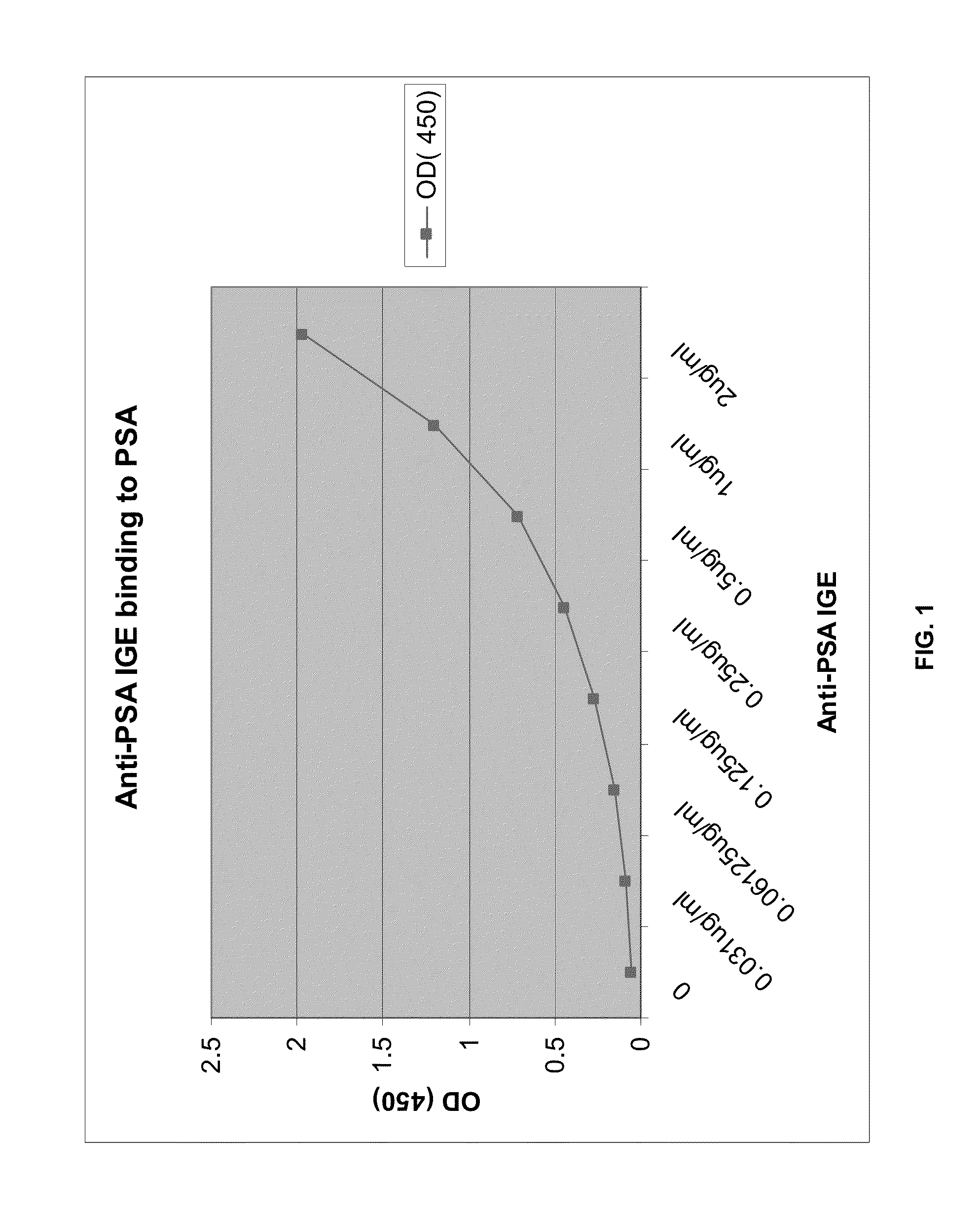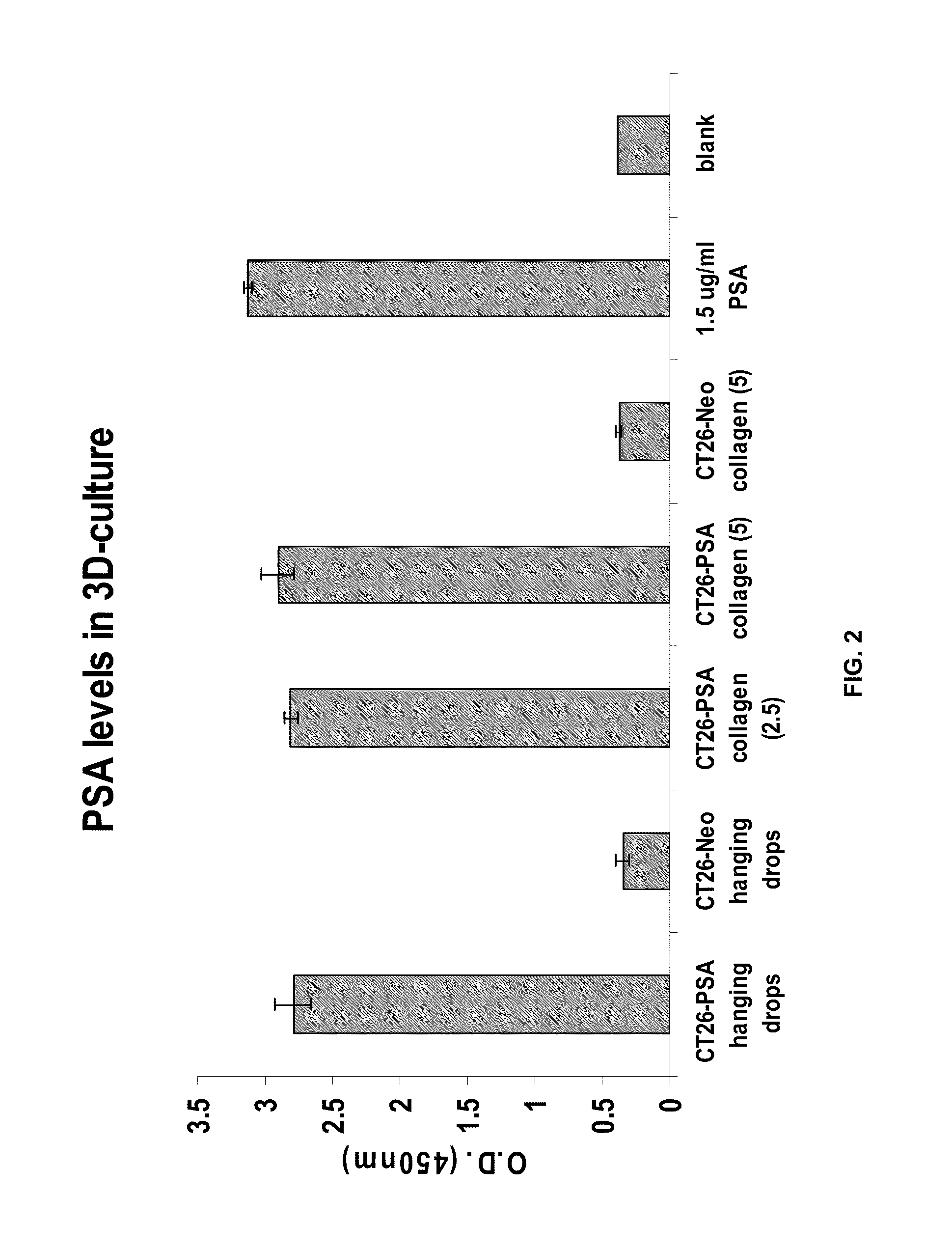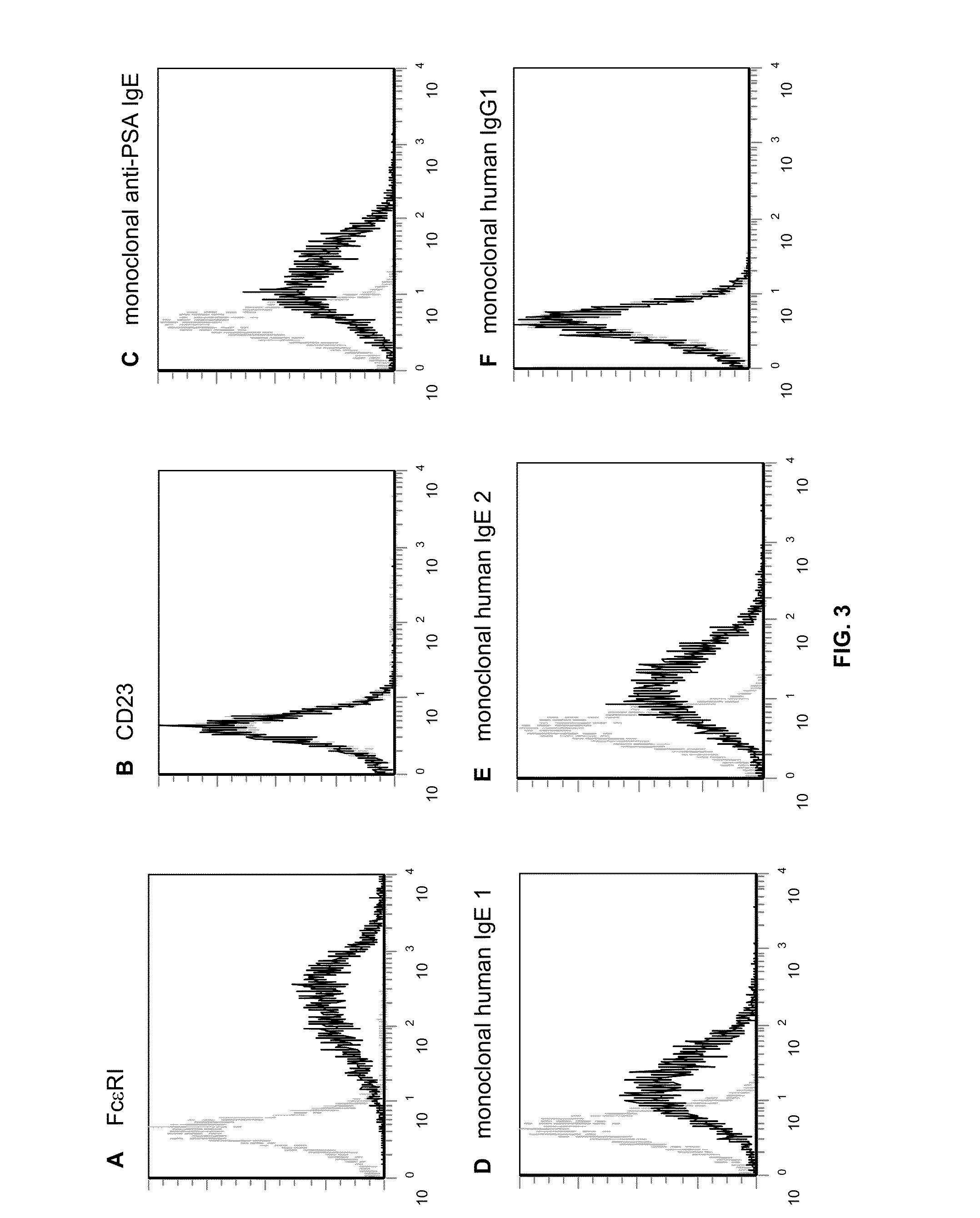IgE ANTIBODIES FOR THE TREATMENT OF CANCER
a technology of antibodies and cancer, applied in the field of allergooncology, can solve the problems of high antigen concentration, poor presentation of tumor antigen on mhc class i and class ii molecules, and recommendation of additional therapy
- Summary
- Abstract
- Description
- Claims
- Application Information
AI Technical Summary
Benefits of technology
Problems solved by technology
Method used
Image
Examples
example 1
Preliminary Study Involving the Construction of an IgG1 and IgG3 Chimeric Antibody with Human Constant Regions
[0076]The methodology used to generate mouse / human chimeric or humanized antibodies that has yielded the successful production of various human chimeric antibodies or antibody fusion proteins is described (Helguera, G. and Penichet, M L, Methods Mol. Med., 109: 347-374 (2005)). A chimeric version of MAb-AR47.47 is described in U.S. Pat. No. 6,881,405. Briefly, the plasmid construction originated from the RNA of the murine hybridoma AR47.47, extracted using the RNeasy Mini Kit (Qiagen, Valencia, Calif.). cDNA was then prepared using the SuperScript III First-Strand synthesis System for RT-PCR (Invitrogen, Carlsbad, Calif.). Both the heavy and light chain variable regions were amplified by PCR and cloned into the PCR-BLUNT II-TOPO® vector using the ZERO BLUNT® TOPO® PCR Cloning Kit (Invitrogen). After sequence confirmation, the murine heavy chain variable region was then subcl...
example 2
Construction of the Human / Mouse Chimeric Anti-PSA IgE Antibody
[0080]A cell line that produces mouse / human chimeric light chain (kappa) with the variable regions of the AR47.47 light chain has already been obtained by transfecting the murine myeloma cell lines P3X63Ag8.653 and Sp2 / 0-Ag14 by electroporation with the mammalian expression vector during construction of the mouse / human chimeric IgG1 or IgG3 AR47.47 as discussed in Example 1.
[0081]The DNA encoding the variable light (VL) and heavy (VH) chain domains of the AR47.47 antibody have been sequenced and cloned already for the generation of the chimeric AR47.47 IgG1 and IgG3. The variable heavy chain region was subcloned from the chimeric anti-PSA IgG1 vector and cloned into a human IgE expression vector (Chan et al, Molecular Immunology 37 (2000) 241-252) so that the variable region is in frame with the CH1 domain. This heavy chain was then co-transfected into the PSA light chain producer described above.
[0082]IgE antibody secret...
example 3
In Vitro Biochemical and Biological Characterization of the Human / Mouse Anti-PSA IgE
[0083]Binding to PSA antigen: The anti-PSA IgE was assessed for initial PSA binding by ELISA. Microwell Maxi-Sorp plates are coated with PSA (1.5 ug / ml in PBS) and incubated at 4° C. overnight. After washing plates are blocked with 3% BSA / PBS for 30-60 minutes at RT. Samples containing anti-PSA IgE are added in serial dilutions (2 ug / ml, 1 ug / ml, 0.5 ug / ml, 0.25 ug / ml 0.125 ug / ml 0.0625 ug / ml, 0.31 ug / ml) and incubated for 2 hr at RT. The presence of anti-PSA specific IgE Abs is detected by biotinylated goat anti-Human IgE (1:2000 dilution, KPL) followed by Strepavidin-HRP (1:10,000) added separately and incubated for 30-60 min each. The assay is developed with TMB and the reaction is terminated with stop solution (H2SO4). Absorbance is measured at 405 nm (FIG. 1).
[0084]In future studies, a transfectoma secreting anti-DNS IgE and anti-DNS IgG1 (Chan, L A, et al., Mol. Immunol., 37: 241-252 (2000)) wi...
PUM
| Property | Measurement | Unit |
|---|---|---|
| concentration | aaaaa | aaaaa |
| molecular weight | aaaaa | aaaaa |
| density | aaaaa | aaaaa |
Abstract
Description
Claims
Application Information
 Login to View More
Login to View More - R&D
- Intellectual Property
- Life Sciences
- Materials
- Tech Scout
- Unparalleled Data Quality
- Higher Quality Content
- 60% Fewer Hallucinations
Browse by: Latest US Patents, China's latest patents, Technical Efficacy Thesaurus, Application Domain, Technology Topic, Popular Technical Reports.
© 2025 PatSnap. All rights reserved.Legal|Privacy policy|Modern Slavery Act Transparency Statement|Sitemap|About US| Contact US: help@patsnap.com



